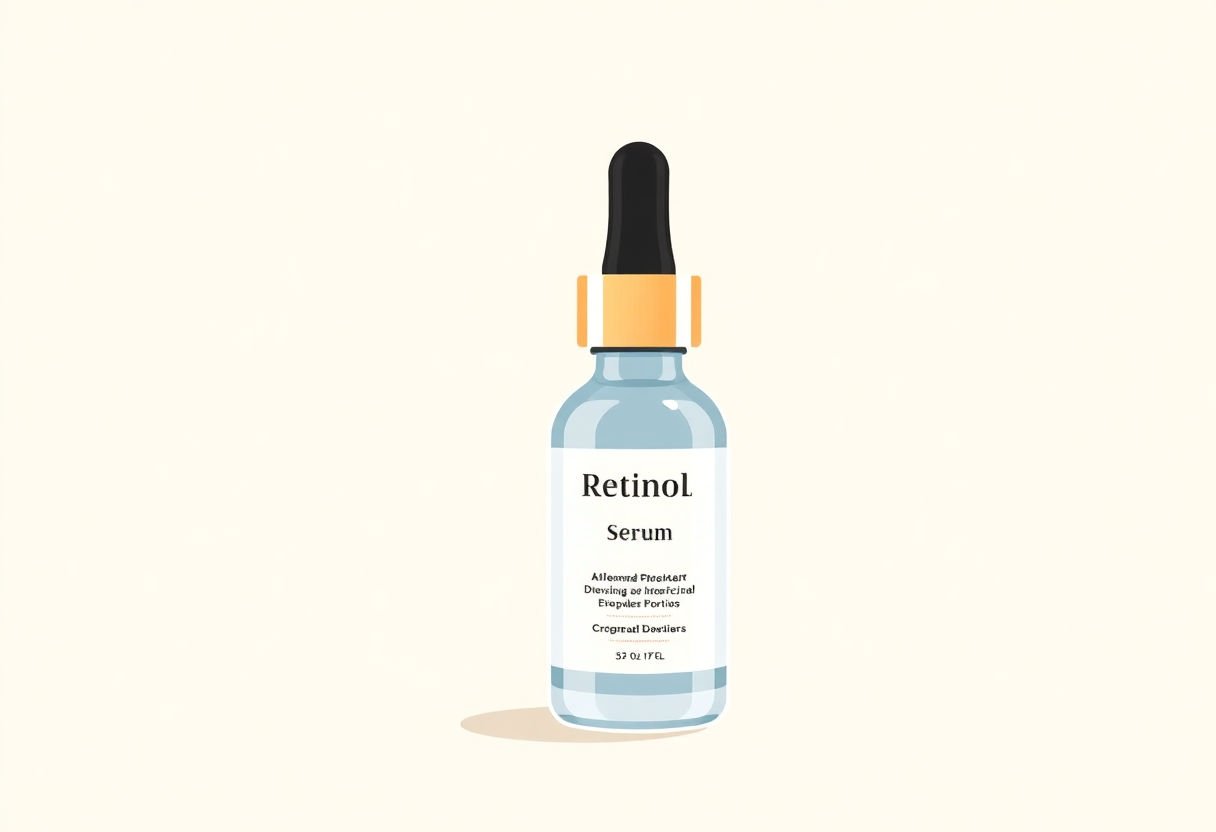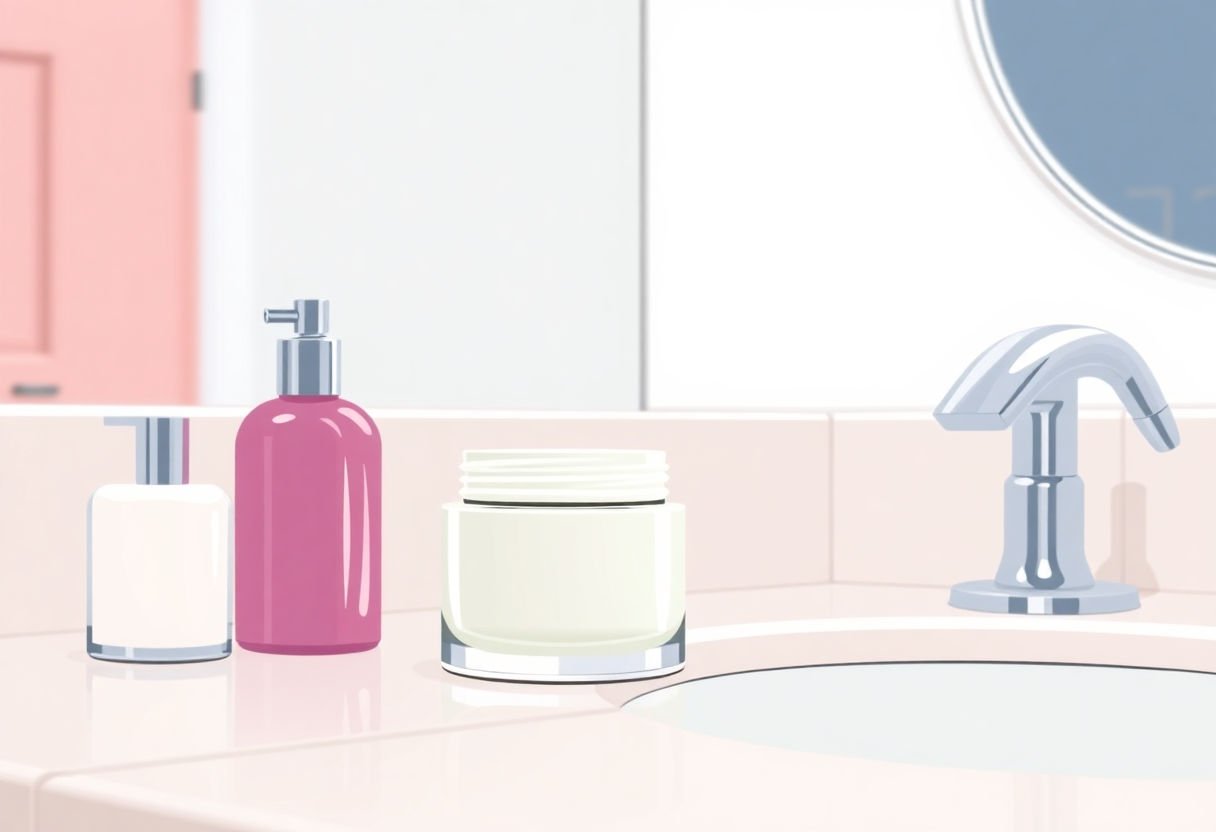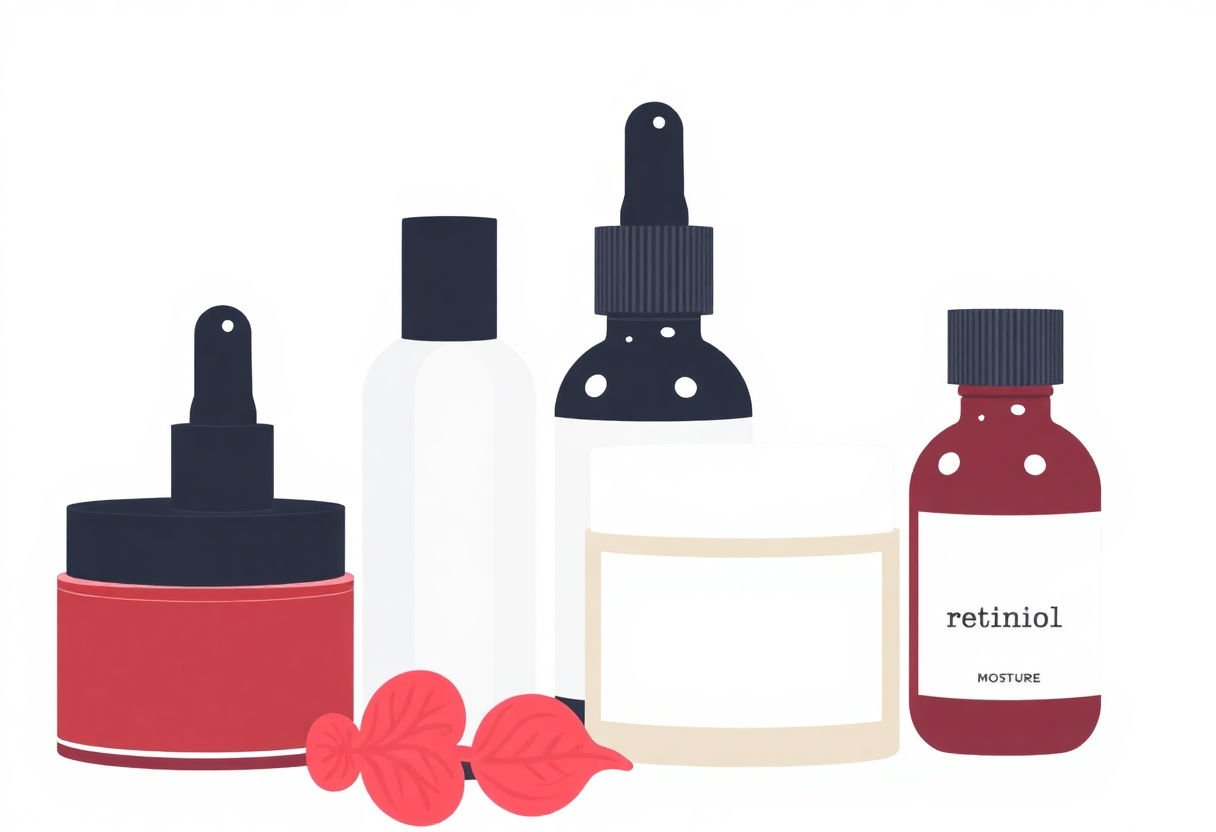Navigating the world of skincare can be challenging, particularly when it comes to maximizing the benefits of retinol while minimizing potential irritation. Understanding the proper use of moisturizer alongside retinol is crucial to enhancing skin health and achieving desired results. This article provides insights into the ideal sequence for applying these products, explores common mistakes, and shares expert recommendations. Dive into the essentials of retinol and moisturizers, learn how to prepare your skin, and discover the best practices for adapting your skincare routine over time. Follow these guidelines to unlock radiant, youthful skin.
Key Takeaways
- Applying moisturizer before retinol can help reduce irritation and enhance skincare results by reinforcing the skin’s protective barrier.
- Retinol should be used gradually, starting with lower concentrations and increasing frequency as tolerated to prevent adverse reactions.
- Moisturizers complement retinol by providing essential hydration that minimizes dryness and peeling, common side effects of retinol.
- Understanding the signs of irritation, such as redness and peeling, is crucial for adjusting your skincare routine for comfort and efficacy.
- Expert tips emphasize the importance of sunscreen use during the day to protect the skin when using retinol products at night.
Understanding Retinol and Its Benefits

Retinol, a derivative of vitamin A, plays a pivotal role in modern skincare due to its remarkable ability to promote skin health. Known as a gold-standard treatment, retinol primarily functions as a potent anti-aging compound. By accelerating skin cell turnover, it helps diminish the appearance of fine lines and wrinkles, making it a favorite among those striving to maintain youthful skin.
Additionally, retinol improves skin texture and evens out skin tone. Its exfoliating action aids in removing dead skin cells, unveiling a smoother and more radiant complexion beneath. This makes it highly beneficial for individuals experiencing rough or uneven skin surfaces.
Beyond its aesthetic contributions, retinol also enhances the skin’s elasticity and firmness. As it stimulates collagen production, users might notice a reduction in sagging skin over time.
Despite its numerous benefits, incorporating retinol into a skincare regimen requires careful consideration to avoid potential irritation. Beginners are often advised to start with lower concentrations to allow their skin to acclimate. Furthermore, retinol can increase skin’s sensitivity to sunlight, underscoring the importance of diligent sunscreen application during the day.
To fully appreciate retinol’s transformative benefits, integrating it into a regular skincare routine is essential. When used appropriately, retinol can be a transformative ally in maintaining healthy, vibrant skin, allowing individuals to enjoy its comprehensive benefits while mitigating potential drawbacks.
The Role of Moisturizer in Skincare

Moisturizers play an essential role in a comprehensive skincare regimen, especially when paired with powerful ingredients like retinol. Their primary function is to hydrate the skin by locking in moisture, which fortifies the skin’s natural barrier against environmental stressors. This hydration not only keeps the skin supple and smooth but also aids in reducing the potential dryness and irritation often associated with retinol use.
Retinol, renowned for its anti-aging properties, can sometimes cause dryness, peeling, or redness, particularly when first introduced into a skincare routine. Incorporating a moisturizer helps mitigate these effects, providing a soothing counterbalance that enhances comfort and effectiveness. By forming a barrier on the skin’s surface, moisturizers prevent transepidermal water loss, maintaining an optimal moisture balance.
Additionally, moisturizers can help improve the absorption of retinol. When used in conjunction with retinol, it’s often recommended to apply moisturizer either before or after retinol, depending on your skin’s tolerance and the specific formulation of the products used. A common approach is the “sandwich method,” where moisturizer is applied both before and after the retinol, offering a cushioning effect.
In sum, the strategic use of moisturizer in conjunction with retinol not only promotes better skin health but also enhances the overall efficacy of one’s skincare routine. By choosing the right moisturizer—ideally fragrance-free and tailored to your skin type—you can fully leverage its protective and hydrating properties for an effective skincare experience.
Preparing Your Skin for Retinol

Preparing your skin adequately before applying retinol is crucial for maximizing its benefits and minimizing potential irritation. Begin with a gentle cleanser to remove impurities without stripping essential oils, ensuring the skin is clean but not overly dry. This provides a fresh canvas for subsequent treatments.
After cleansing, incorporate a toner tailored to your skin type. Choose an alcohol-free formula to avoid additional dryness that could exacerbate sensitivity to retinol. Toners help balance the skin’s pH and prepare it for more intensive treatments.
Introduce hydration steps before applying retinol. Lightweight hydrating serums containing ingredients like hyaluronic acid can be used to add a layer of moisture. This can enhance skin elasticity and support the efficacy of retinol, especially for those with sensitive or dry skin.
Prior to retinol, consider using a barrier-enhancing cream. This can serve as a buffer for first-time users or those with sensitive skin, moderating uptake and reducing potential irritation. This step is particularly recommended for nighttime routines, allowing the skin to recuperate overnight.
Gradually introducing retinol can significantly aid in reducing irritation. Start with lower concentrations and increase frequency as skin adapts, typically over several weeks. This can enhance tolerance and effectiveness over time.
Remember, adequate sun protection is also essential, as retinol can increase photosensitivity. Ensuring your skin is well-prepared not only amplifies retinol’s benefits but also shields it from unnecessary discomfort, creating a more forgiving and nurturing skincare experience.
Applying Retinol: Dos and Don’ts

To maximize the benefits of retinol, it is crucial to adhere to some fundamental dos and don’ts.
Dos:
- Introduce Gradually: Start by applying retinol products two to three times a week. This allows your skin to adjust and minimizes the risk of irritation.
- Use a Pea-Sized Amount: Apply only a small amount to your entire face. Using more can lead to excessive dryness or peeling.
- Apply at Night: Retinol makes your skin more sensitive to the sun. For optimal effectiveness, incorporate it into your nighttime skincare routine.
- Follow with Moisturizer: Retinol can be drying, so follow up with a hydrating moisturizer to lock in moisture and protect your skin.
Don’ts:
- Avoid Immediate Exposure to Sunlight: Applying retinol during the day can increase the risk of sunburn. Always use broad-spectrum sunscreen if you’re heading outdoors in the morning.
- Don’t Mix with Certain Ingredients: Avoid combining retinol with exfoliants like alpha hydroxy acids or benzoyl peroxide to prevent irritation.
- Never Apply on Wet Skin: Retinol can penetrate more deeply and potentially cause irritation if applied to damp skin. Ensure your skin is completely dry before application.
Incorporating these practices can enhance your skincare routine and help you effectively harness retinol’s powerhouse benefits without hindrance. Remember that patience is key in skincare—consistent and cautious use will lead to the best results over time.
The Correct Sequence: Moisturizer and Retinol

To effectively blend retinol into your skincare regimen while ensuring optimal hydration and minimizing irritation, understanding the correct sequence of application is crucial. Retinol should typically be layered properly to allow your skin to reap its maximum benefits without adverse effects.
Begin your nighttime skincare routine by thoroughly cleansing your face to remove any impurities or makeup. This prepares your skin, allowing both the retinol and moisturizer to penetrate effectively. After cleansing, gently place a few drops of your retinol product into your palm, and use your fingertips to apply it evenly, focusing on areas with fine lines or hyperpigmentation. It’s advisable to start with a lower concentration, gradually increasing as your skin becomes more tolerant.
After allowing the retinol to absorb for a few minutes, proceed with your moisturizer. This step is vital as moisturizers act as a barrier that seals in moisture, mitigating possible dryness and irritation caused by retinol. Opt for a gentle, nourishing moisturizer rich in hydrating ingredients like hyaluronic acid or ceramides to further enhance skin comfort and hydration levels.
Some skin types may benefit from an approach known as the “moisturizer sandwich.” This technique involves applying a layer of moisturizer before and after the retinol, providing an additional buffer that may enhance tolerance, especially for sensitive skin.
By diligently following this sequence, you not only maximize your skincare routine’s effectiveness but also protect your skin’s integrity, paving the way for a healthy, radiant complexion.
Adjusting Your Skincare Routine Over Time
Adapting your skincare routine over time is crucial as your skin acclimates to retinol. Initially, it’s advisable to limit introduction to retinol use by applying it every third night. As your skin builds tolerance, gradually increase application frequency to nightly, if tolerated well. Monitoring your skin’s response is essential; redness, peeling, or excessive dryness may indicate overuse, necessitating adjustment in application.
Alongside retinol, considering the seasonal changes in your environment can affect your skincare regimen. During colder months, when air is dry, your skin may require a more intensive moisturizer to combat dryness and maintain hydration. Conversely, in humid conditions, a lighter moisturizer might suffice.
Regularly evaluating your skin type is equally important. For those with oily skin, retinol can produce favorable results by reducing breakouts, but it’s vital to maintain balance with non-comedogenic moisturizers to avoid clogging pores. Individuals with sensitive skin may benefit from buffering methods, applying moisturizer before retinol to minimize potential irritation.
Another pivotal aspect is adjusting other components of your routine. Exfoliation may need to be dialed down to prevent over-exfoliation when using retinol. Explore incorporating soothing ingredients like niacinamide or hyaluronic acid, which can enhance hydration and reduce inflammation.
Finally, keep an eye on any ongoing developments in your skin’s behavior. Consulting with a dermatologist can provide personalized guidance, ensuring your routine aligns with evolving skin needs, maintaining its health and balance as retinol use progresses over time.
Signs of Irritation and What to Do
When incorporating retinol into your skincare regimen, it’s crucial to recognize signs of irritation early to prevent long-term damage. Redness, dryness, flaking, and sensitivity are common indicators that your skin may be reacting adversely to retinol.
To mitigate irritation:
-
Hydration is key: Ensure your skin remains well-hydrated by applying a gentle, fragrance-free moisturizer before and after retinol use. This creates a protective barrier that can reduce the potential for irritation.
-
Introduce retinol gradually: Begin with a lower concentration and increase usage as your skin builds tolerance. Consider starting with once or twice a week applications, then gradually increase frequency.
-
Consider retinol alternatives: If irritation persists, explore other skincare ingredients like bakuchiol, which is known for delivering similar benefits without causing sensitivity.
-
Monitor product combinations: Using multiple active ingredients simultaneously can heighten skin irritation. Avoid layering retinol with other strong acids or exfoliants.
-
Listen to your skin: If irritation intensifies, give your skin a break from retinol for a few days. During this time, enhance your skincare routine with soothing ingredients like aloe vera and chamomile.
In severe cases, always consult with a dermatologist. They can provide tailored advice and perhaps recommend prescription-strength retinoids that might be more suitable for your skin type. By addressing irritation promptly and thoughtfully adjusting your routine, you can enjoy the manifold benefits of retinol without compromising skin health.
Expert Tips for Enhancing Skincare Outcomes
To enhance the effectiveness of moisturizer and retinol in your skincare routine, consider these expert tips. First and foremost, consistency is key. Incorporate retinol into your routine gradually, using it two to three times a week and increasing frequency as your skin builds tolerance.
When applying retinol, it’s crucial to start with a small amount—pea-sized can be optimal—and ensure it’s evenly distributed across your face. Pairing this with a trusted moisturizer will not only provide necessary hydration but also act as a buffer against potential irritation. Experts recommend applying a moisturizer first, especially if your skin is sensitive, as it creates a protective layer that minimizes retinol’s irritating effects.
Timing also plays a pivotal role. Retinol should be applied at night since it can make your skin more sensitive to sunlight. Following with your moisturizer ensures overnight hydration and protection.
Incorporating regular exfoliation into your weekly regimen can help remove dead skin cells, allowing both retinol and moisturizer to penetrate more effectively. However, balance is essential—over-exfoliating can lead to increased sensitivity.
Lastly, be mindful of your entire skincare lineup. Retinol can be potent, and certain products, such as acid-based exfoliants, may not pair well without causing distress. Instead, support your skin’s health with serums and creams rich in antioxidants and vitamins that can enhance retinol’s efficacy without the risk of harm. Always remember to wear sunscreen during the daytime to protect your skin from UV damage, which can be exacerbated by retinol use.
Conclusion
Successfully integrating moisturizer and retinol into your skincare regimen can yield significant improvements in skin health. By following the correct sequence and adjusting your routine over time, you can maximize the anti-aging and skin-texture benefits of retinol while minimizing irritation. As you become accustomed to retinol, continue monitoring your skin’s reactions and refining your approach. This not only ensures better skincare outcomes but also paves the way for long-term skin vitality. Embrace these expert tips and remain patient; achieving radiant, healthy skin is a journey worth undertaking.
Frequently Asked Questions
What is the best order to apply moisturizer and retinol?
Experts recommend applying retinol first, followed by moisturizer. This sequence helps buffer the skin and minimize irritation while allowing the active ingredients in retinol to penetrate efficiently.
Can I use retinol every night?
It is advisable to start using retinol two to three times per week and gradually increase the frequency as your skin builds tolerance. Daily use may be achieved over time, but it’s important to monitor your skin’s reaction and adjust accordingly.
How long should I wait between applying retinol and moisturizer?
Waiting a few minutes after applying retinol before moisturizing ensures that the retinol absorbs properly into the skin. This buffer time allows for maximum efficacy of both products.
Is it safe to mix retinol with other active ingredients?
Caution is advised when mixing retinol with other actives such as vitamin C, benzoyl peroxide, or AHAs/BHAs. These combinations can increase irritation, so it’s best to use them at different times of the day or on alternate days.
How can I reduce irritation from retinol?
To minimize irritation, incorporate a fragrance-free moisturizer with soothing and hydrating ingredients into your routine. Slowly increase retinol usage and avoid combining it with other potentially irritating products.
